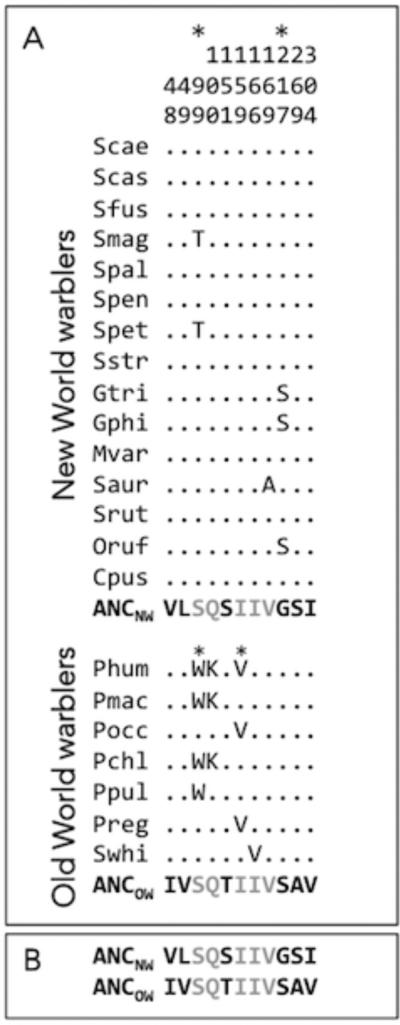Figure 3.
Alignment showing only variable amino acid residues of the SWS2 coding sequences for the New World warblers and the Old World warblers based on full coding sequences. Numbers correspond to amino acid positions standardized by the bovine rhodopsin (GenBank M21606). Refer to Figure S1 for the precise location of each substitution relative to transmembrane domains. Species names are abbreviated as the first letter of the genus and the three first letters of the species (i.e. Setophaga castanea is Scas, see Fig. 1 for full species names). All variable sites are shown relative to the inferred ancestor of each clade: ANCNW for New World and ANCOW for Old World warblers, as obtained by likelihood/Bayesian methods. Dots indicate the identity of the amino acids with the ancestor sequences at each site, thus species that only have dots match the ancestral amino acid sequence at all sites. As highlighted in panel (b), the SWS2 sequence of both ancestors differs between clades. Positions in grey correspond to residues that have the same amino acids in the ancestors of New World and Old World warblers and residues in black are those that differ between both ancestors and thus with fixed differences between both clades. *Sites identified as evolving under positive selection within clades (see Table S3).

